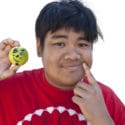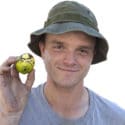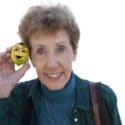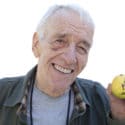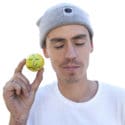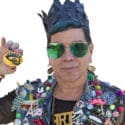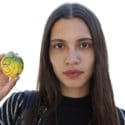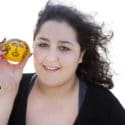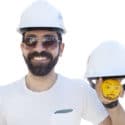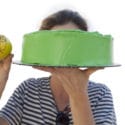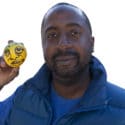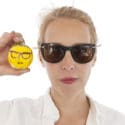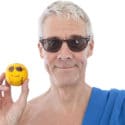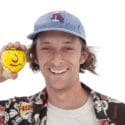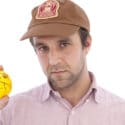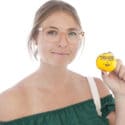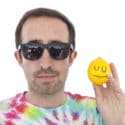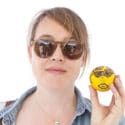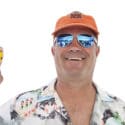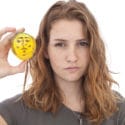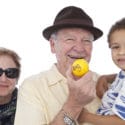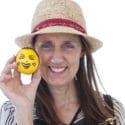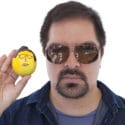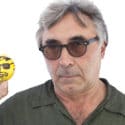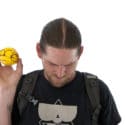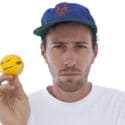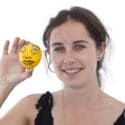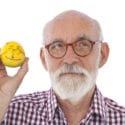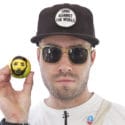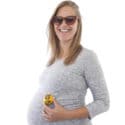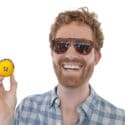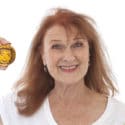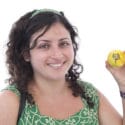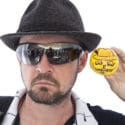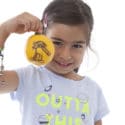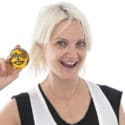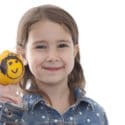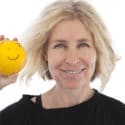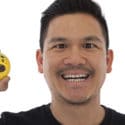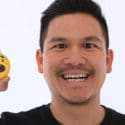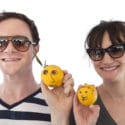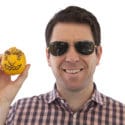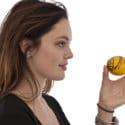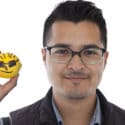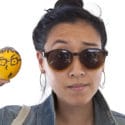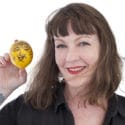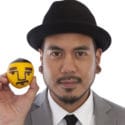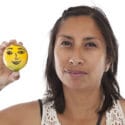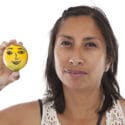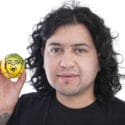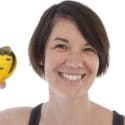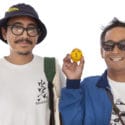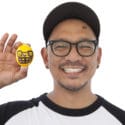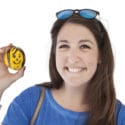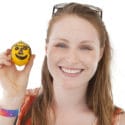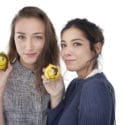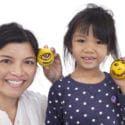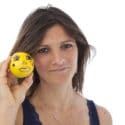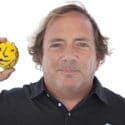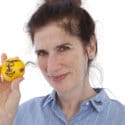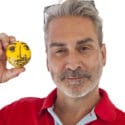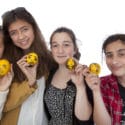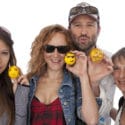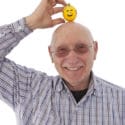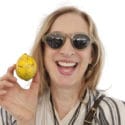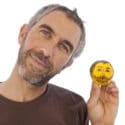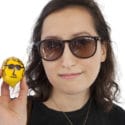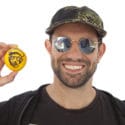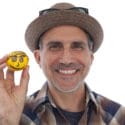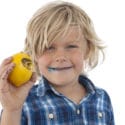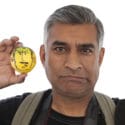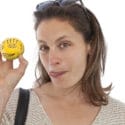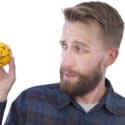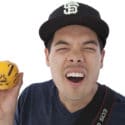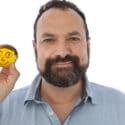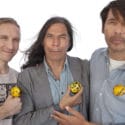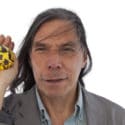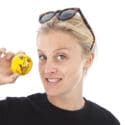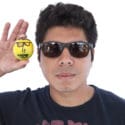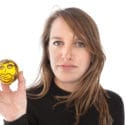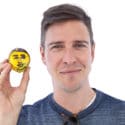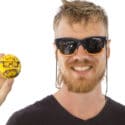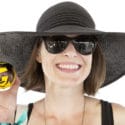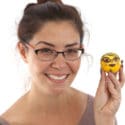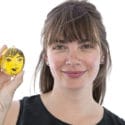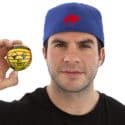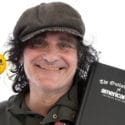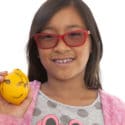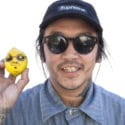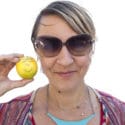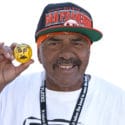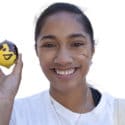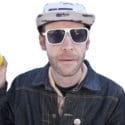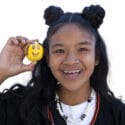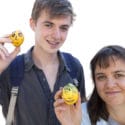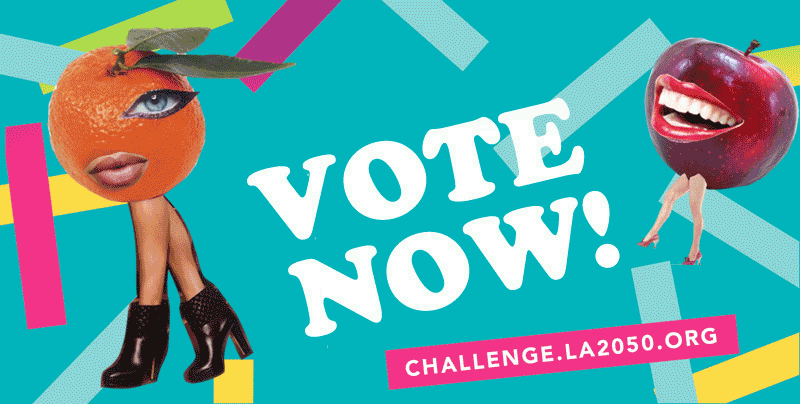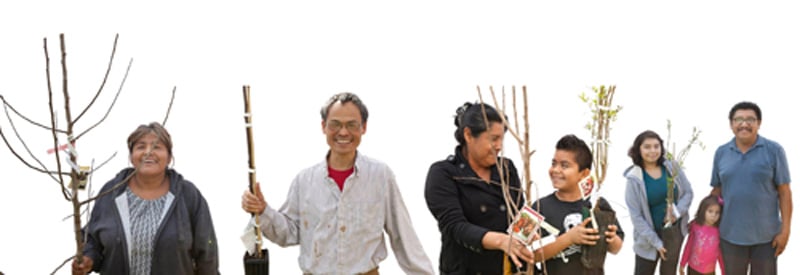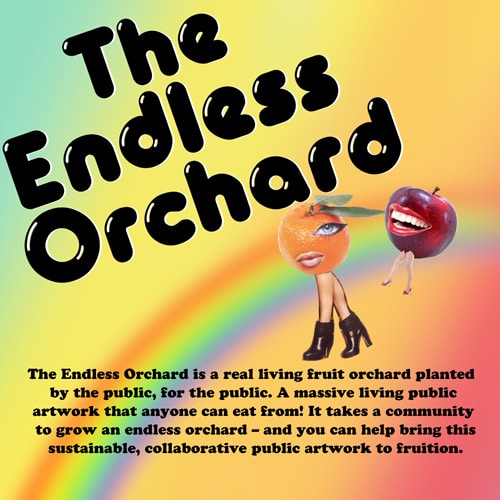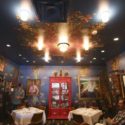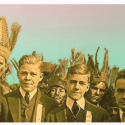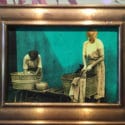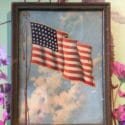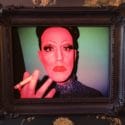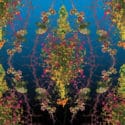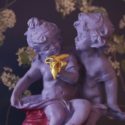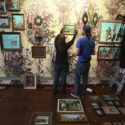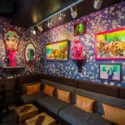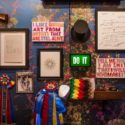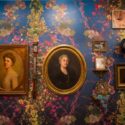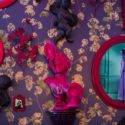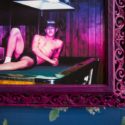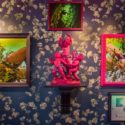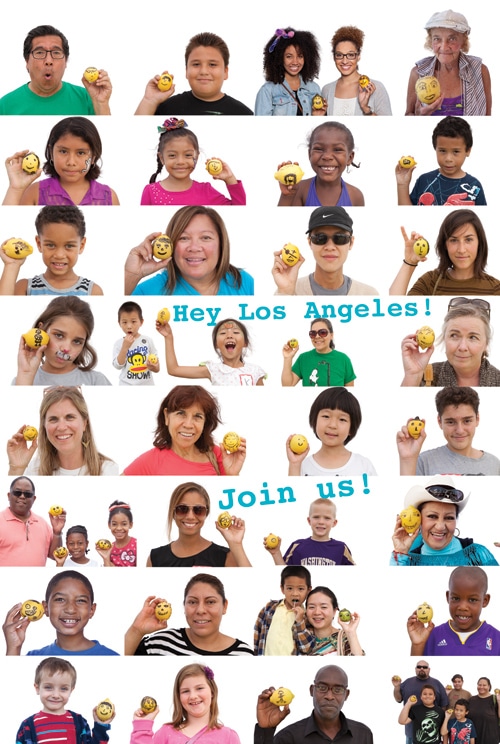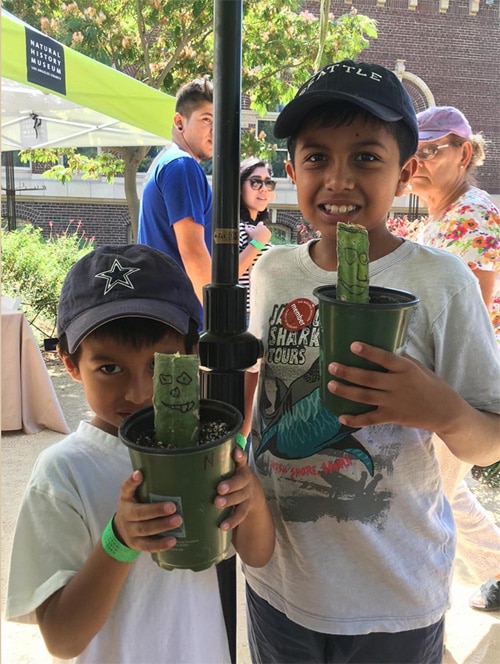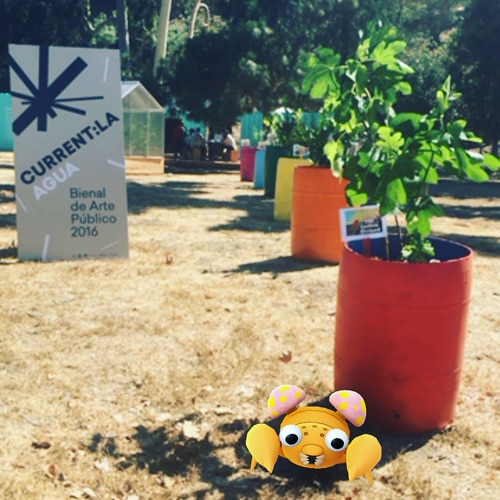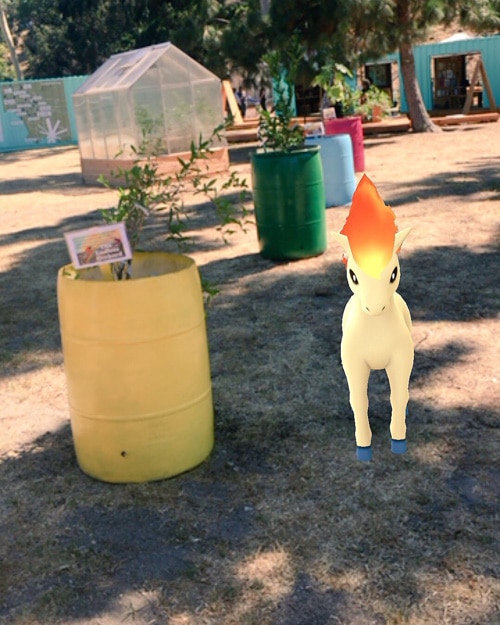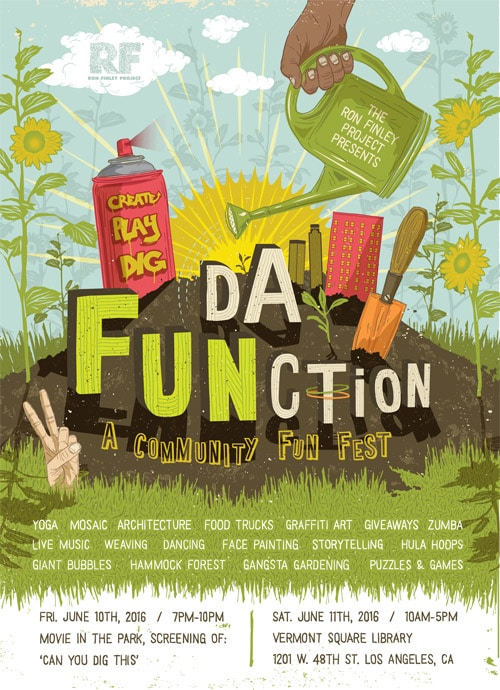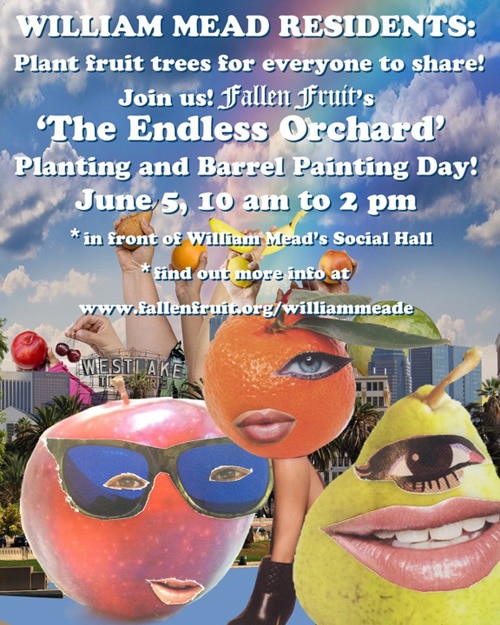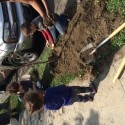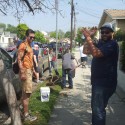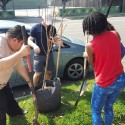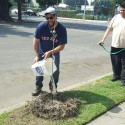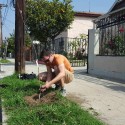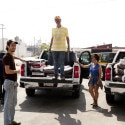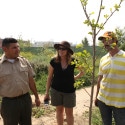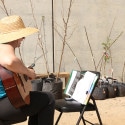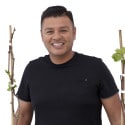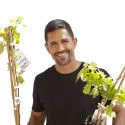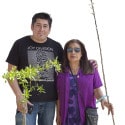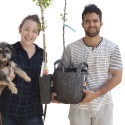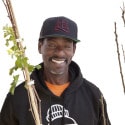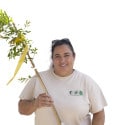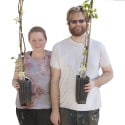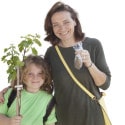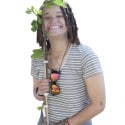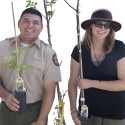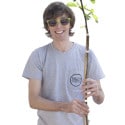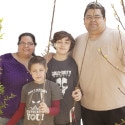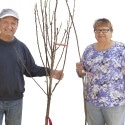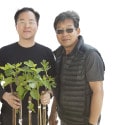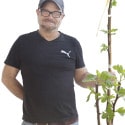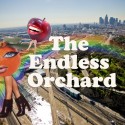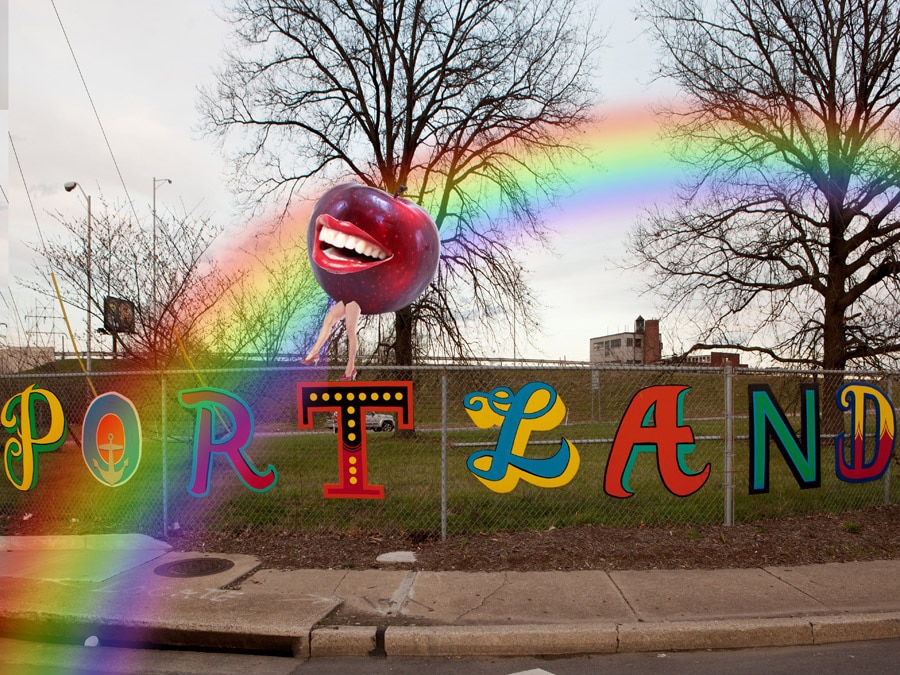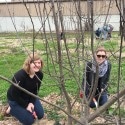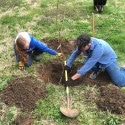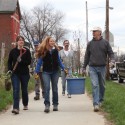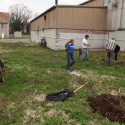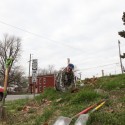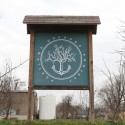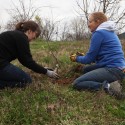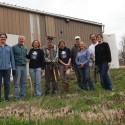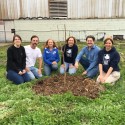Lemonade Stand at Sites Unseen
“Lemonade Stand!” A public participatory project by Fallen Fruit (David Burns & Austin Young) at Sites Unseen in San Francisco at Moscone Center Garage. We also planted fruit trees in Rainbow colored barrels for everyone to share. Thank you United Playaz for helping us plant! “Lemonade Stand”, a public participatory artwork by Fallen Fruit exploring ideas of temporary community and new forms of public. During this special presentation on the steps of Central Library, draw a self-portrait onto a lemon and receive a glass of organic lemonade. The lemon self-portraits will collectively form a group portrait of everyone who participated, illustrating some of the archetypes that construct community. “when life gives you lemons…” Sites Unseen at Moscone Center Garage at 255 Third Street in downtown San Francisco’s Yerba Buena neighborhood.
LA 2050 Grant Challenge: Endless Orchard-Phase 2
The voting has begun for the LA2050 Grants Challenge!
Fallen Fruit is in the running to fund The Endless Orchard: Phase Two which imagines LA as a colorful garden of eden, lush with fruit trees bearing juicy shareable fruits—all planted by and for Angelenos in public space. Tree tags placed at each fruit tree identify it as part of a network of sharing. Anyone can collaborate with the project by planting, mapping, sharing, and navigating the fruit trees via the free online website and app.
The Endless Orchard: Phase Two officially launches this winter at the new Los Angeles State Historic Park, the trailhead of The Endless Orchard, an orange grove and a monument to sharing. Come help us plant, map, and share! And win the LA2050 Grant Challenge.
Vote for Fallen Fruit! Vote now! https://challenge.la2050.org/entry/the-endless-orchard-phase-two
Voting ends at 5PM October 25. Please forward, click, and share.
When you vote for Fallen Fruit, you vote for this!
- Access to healthy food
- Resilient communities
- Self-sufficiency
- Tree canopy cover
- Reduced exposure to air toxins
- Decreased obesity
- High walk/bike/transit scores
- Collaborative Spirit
Our Partners include: Code Rodeo, Creative Capital and Los Angeles State Historic Park and everyone who wants to collaborate with us! Learn more about the LA2050 Initiative: la2050.org/
The Endless Orchard project collaborates with the citizens of Los Angeles planting fruit trees on the margins of public and private space, in front of homes and businesses and spaces like parkways, bike paths and alleys. Tree tags placed at each fruit tree identify it as part of a network of sharing. Anyone can collaborate with the project by planting, mapping, sharing, and navigating the fruit trees via the free online website and app.
Help us create an Endless Orchard:
- Share why you love the #EndlessOrchard for a #betterLA.
- email your friends and ask them to vote for The Endless Orchard– from Oct. 18 thru Oct.
- Visit my project page at: The Endless Orchard
- If you use an email address, you will be emailed a link that you need to click in order to verify your address.
- Click “Vote for this idea” to vote for me!
- Once you’ve voted, you’ll get a notification at the top of the screen and an email verifying that your vote has been counted.
- Log in on to the My LA2050 voting site. If you don’t have an account, it’s free to join. You can use social sign-in via Twitter or Facebook or your email address.
- Remember, you can vote once per goal category during the entire voting period, so please let your friends know and encourage them to check out project ideas in other categories!
The website and app are a collaboration with Code Rodeo, a web and app development, social media, and digital marketing agency based in Boyle Heights. Female owned and operated, Code Rodeo works to bring to life projects that are socially aware and experientially meaningful.
The free app will allow anyone to participate and grow the project in their own neighborhood. The public mapping functionality allows the trail to continually grow. Users upload video, photo and text associated with a tree.
The Endless Orchard was awarded the prestigious Creative Capital grant in 2013. Creative Capital remains our partner and will use their vast resources and expertise to help publicize this project and ensure its success.
The Los Angeles State Historic Park will provide us space to have our public tree donations and planting events. Permanent Signage at the park will describe the Endless Orchard and maps will be available.
[yikes-mailchimp form=”1″]
Sites Unseen – Lemonade Stand in San Francisco!
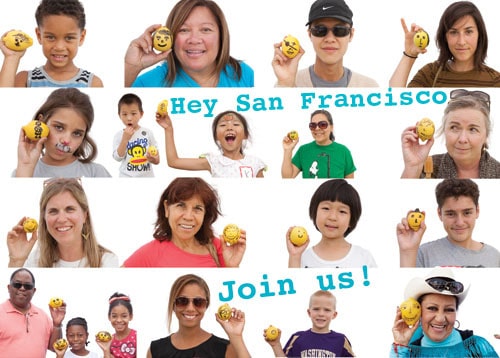 Sites Unseen will present its first large scale public art installation Sunday, October 9, 2016 from 3PM–6PM at a free all-ages event adjacent to the Moscone Center Garage at 255 Third Street in downtown San Francisco’s Yerba Buena neighborhood. At 3:30PM, project and community leaders will gather at the northwest corner of the garage to present opening remarks.
Sites Unseen will present its first large scale public art installation Sunday, October 9, 2016 from 3PM–6PM at a free all-ages event adjacent to the Moscone Center Garage at 255 Third Street in downtown San Francisco’s Yerba Buena neighborhood. At 3:30PM, project and community leaders will gather at the northwest corner of the garage to present opening remarks.
The event, open to all, will celebrate the installation of “Moscone Contemporary Art Centre & Garage,” artist Barry McGee’s multi-colored painted artwork installed in several locations on the exterior of the Moscone Center Garage. The event will also feature temporary, participatory programming by local artists Ramekon O’Arwisters and Leah Rosenberg, and by Los Angeles-based artist collective Fallen Fruit.
Practices of Everyday Life
Fallen Fruit’s new Site-specific installation for 21c at Proof On Main on view through 2018.
David Burns and Austin Young/Fallen Fruit, (American)
The Practices of Everyday Life, 2016
Mixed media, including wallpaper, painting, prints, and found objects
“Fallen Fruit’s immersion into the people and places that have shaped this community reveals a multitude of stories and connections in a visually dazzling and profoundly genuine expression of place making,” said Alice Gray Stites, 21c Museum’s ground-breaking director and chief curator. “21c is proud to have commissioned an ambitious project that is truly locally engaged and globally connected. The installation addresses a universal aspect of the human condition, hunger-to be fed, to be seen, to belong, to be loved. The persistence of these desires fosters the continuity of ritual: the practices of everyday life don’t really change-we eat, drink, we talk, we congregate and celebrate in ways that would be recognizable to our forbears at least a century ago-these acts retain meaning and promise.”
David Burns and Austin Young, who work as the duo Fallen Fruit, explore and transform located geographies and narrative histories at the intersections of public and private spaces. This site-specific commission is inspired by a wide range of definitions of “the public,” from the stranger or passerby to the vast public spaces of the Internet, and includes collective histories found in native and creationist mythologies, generational knowledge, and public and private archives.
“We created a work of art in the form of an art installation at Proof on Main that celebrates people and place using source material from architectural salvage yards, historical images, personal diaries, amateur films, and ephemera from Louisville, Kentucky and Southern Indiana,” explain the artists. Constructed from dozens of individual photographs, texts, and objects, their research-based work is intended to celebrate the culture of place. The selection of each photograph, wall treatment, or object is deliberate; even the seemingly obtuse or misplaced is carefully chosen to create contrast and to explore conflicting shifts in meaning. The artwork intimately explores the boundary of what is “public” and what is “private.”
At 21c, Fallen Fruit’s custom wallpaper patterns represent the spectrum of historical, environmental, and cultural characteristics of Louisville, Kentucky. The wallpaper in Proof lounge features photographs of the pear tree blossoms that line sidewalks downtown and other parts of the city. The experience of love blooms, wanes, returns, and revives in the sculptures, photographs, and other objects that constitute It Happens To Everyone Some Day / The Last “Gay” Bar In America. Images of notable citizens like Henrietta Bingham, David Williams, Stephen Irwin, and others hang beside contemporary pin ups, evoking endless tales of passion, romance, heartbreak, and inspiration.
The red dogwood blooms seen in the main dining room’s wallpaper pattern reference a Cherokee creationist myth, while the framed artworks hanging here represent the pre-contact culture of this region prior to 18th century European settlement. Kentucky once served as a hunting ground for native cultures. Later trading posts drew in both settlers and natives. The bison and landscape photographs were taken by the artists at Goshen County’s Woodland Farm in 2016. Taxidermy bison busts hang near the restaurant windows; their majestic features are mirrored in the pop-art portraits hanging amid photographs of forests and rivers, Native Americans, as well as historical documents, and other ephemera. The images of Native Americans come from the archives of the Library of Congress, and include 20th-century portraits for which sitters were sometimes costumed, posed, and paid to represent cultures that were already doomed by European-American expansion.
In the west dining room, Farm To Table / 1864 to 2016 honors Kentucky’s agrarian roots, which have sustained this community for over two centuries: the space is wallpapered with images of vegetables and fruits grown at Woodland Farm, some of which are served in the restaurant. Images of some of the complex histories about Kentucky evoke contemporary issues that persist in the United States today, including our relationship to food production, systemic poverty, and urban development. And in the private dining room, Love Is All You Need pays homage to 21c founders Laura Lee Brown and Steve Wilson: the paintings and objects on view here are drawn from their personal collections, while the wallpaper features patterns of the flowers grown in the gardens of their home in Oldham County.
“The practices of everyday life,” explain the artists, are “everyday interactions by everyday people that create community and generate the stories that become history and mythology. It is the both the extraordinary and the overlooked that together simultaneously make a place special and unique. There are moments in life that we share communally, often regionally, and sometimes generationally, that are meant to be celebrated, shared, and remembered. These moments may be discovered in the mundane, or hidden away in archives for future generations. We are interested in the idea of the public, citizenship, and community, and how everyday people are poets and scribes and artists and documentarians as much as they are strangers, neighbors, and friends. As artists, we realize that it is not one particular story that tells the truth about a place. Instead we believe that community is formed by many different people’s stories and collectively these stories about place and people form the cultural bonds we celebrate and honor through local traditions and more.”
Founded in 1778, and named after King Louis XVI of France, Louisville has negotiated boundaries and bridged shifts between “here and there” from the beginning. . Defined by the Ohio River on the north and the west, it was once frontierland at the edge of the United States; until 1816 it functioned as a gateway to the West. The area served as a boundary between the North and the South during the Civil War. Enslaved African Americans escaped to freedom here, where the Underground Railroad crossed the river. The word “Kentucky” translates from native languages as “the blood of the land”) but it also can mean the “place of tomorrow.” It was the beginning and end of the explorations of Lewis and Clark. In the 20th century the federal government twice obstructed river access, first by installing massive flood control walls following the great flood of 1937, and later in the 1960’s by building interstate highways that block the city’s relationship to its waterfront.
While the artists found diversity and difference in the city, they say, “We learned that one thing Louisvillians have in common is that they are neither Southern nor Northern, not from the West coast or the East coast; they are kind, welcoming people from an important region of Kentucky that has a long history in the United States, and a pride in heritage and love of family that is both steadfast and true.” Young and Burns note that Louisville is home to several expansive historical archives that contain vast collections of photography, film, personal effects, legal documents, and ephemera. They add, “These types of archives exist in most major cities in the United States, however the depth and breadth of the archives at the Carnegie Center for Art and History, the Indiana Room at the New Albany Public Library, the University of Louisville, and the Filson Historical Society are models for the entire country .”
“The archival materials for the installation project activate selected images that explore meanings of everyday life through the lenses of other people’s cameras,” observe the artists. “We use language and phrases excerpted from the page’s other peoples’ notebooks and diaries-although the display of the artwork renders authorship of the material anonymous. After all, our collaboration is with people who we cannot ever really know.”
Some of the images the artists installed may seem cliché or banal, while others offer challenges. . The content selected spans several generations, from the mid-1800s to the present day. By their nature archives often contain things that were once private; personal meanings from other peoples’ lives get replaced over time, becoming signifiers that represent a broader understanding. Often the subjects of the stories that have been isolated and removed from context in hard to find file boxes become transformed in a new context that speaks to and reflects contemporary experiences.
“We believe that contemporary art has the ability to shift vision, alter meaning and explore humanity,” say Burns and Young, “In these ways both abstraction and collage may appear beautiful to a stranger or passerby, and at the same time could also inspire an in-depth discovery of the sundry and nuanced complexities embedded in these images, objects, and documents from other people’s lives. The element of chance is an important part of any discovery. It is the unexpected message you may come across in daily life that redirects your attention, or that important ,’glimpse in a mirror’ that creates a short pause, or an unexpected rainbow you see on a landscape that makes you smile regardless of age. This opportunity to allow the unexpected into our lives may change a perception of space and an experience of time even for a short moment. Like a breath or a pause in movement, a flicker in an old film, a pop on an old recording, these glitches are a form of magic that reminds us that life is really happening in the moment and we are all in the process of living it with everyone around us. In these ways both the extraordinary and banal become temporarily equal and these forms of collective experience become integrated with our own individual authorship of life-in a very basic way we have no other choice.”
“We are interested in the idea of the public, citizenship, and community, and how everyday people are poets and scribes and artists and documentarians as much as they are strangers, neighbors, and friends,” say the artists.
Exhibited Works
Installations:
It Happens To Everyone Some Day / The Last “Gay” Bar In America, found frames, found photography from the archives of Emily Bingham, David Williams, John Lair, Bill Carner, Letitia Quesenbarry and the archives at the University of Louisville, original pin-up photography, found objects, custom soundtrack and video playlist on Youtube, 2016
Kentucky / , found frames, found taxidermy busts, original photography from Goshen, Kentucky, found photography from the Edward Curtis collection at The Library of Congress, 2016
Farm To Table / 1864 – 2016, found frames, found objects, found photography, 2016
All You Need Is Love, found objects from personal collections and archives of Laura Lee Brown and Steve Wilson, 2016
Sculpture:
Bizarre Love Triangle, found objects, epoxy acrylic paint, 2016
The Golden Pussy, found object, gold leaf gilding, 2016
It Feels Like The First Time, found object, epoxy, acrylic paint, 2016
#PARTY, found object, epoxy, acrylic paint, 2016
The Innocents, found object, found locket necklaces, portraits of the senior class from a 1964 yearbook, epoxy, acrylic paint, 2016
Acknowledgments:
Fallen Fruit and 21c Museum Hotel are deeply grateful to the Carnegie Center for Art and History, New Albany, the Indiana Room at the New Albany Public Library, the University of Louisville, and the Filson Historical Society for granting the artists access to their archives. We also wish to acknowledge the generosity of the Indiana Room and the Carnegie Center for providing many of the images and documents featured in The Practices of Everyday Life. Additional materials were made available by the Library of Congress, and by individual members of this community, including Laura Lee Brown and Steve Wilson, Emily Bingham, David Williams, and others.
ABOUT 21c MUSEUM HOTEL
A multi-venue museum, 21c was founded by Laura Lee Brown and Steve Wilson, contemporary art collectors and preservationists who are committed to bringing works of art to the public through innovative exhibitions and programs that integrate contemporary art into daily life. 21c Museum presents a range of arts programming curated by Museum Director, Chief Curator Alice Gray Stites, including thought-provoking solo and group exhibitions that reflect the global nature of art today, as well as site-specific, commissioned installations, and a variety of cultural events. The organization collaborates on arts initiatives with artists and organizations worldwide, including North Carolina Museum of Art, MASS MoCA, Contemporary Art Museum Houston, The Barnes Foundation, Contemporary Arts Center, Cincinnati, Creative Capital Foundation, and others. Since opening in Louisville, KY in 2006, 21c Museum has presented more than 85 exhibitions, including Cuba Now!;?Alter Ego: A Decade of Work by Anthony Goicolea; Blue: Matter, Mood, and Melancholy; Aftermath: Witnessing War, Countenancing Compassion; Hybridity: The New Frontier; Seeing Now; Dis-semblance: Projecting and Perceiving Identity; Albano Afonso: Self-Portrait as Light; and Pop Stars! Popular Culture and Contemporary Art
Lemonade and Dragon Fruit! August 13th
Upcoming Summer Participatory Events In Los Angeles! The HUB is the central site of LA Water Public Art Biennial, 2016 see the official event calendar.
The HUB3306 Riverside Drive, Los Angeles, CA 90027
Water-wise Public Planters: A RAINBOW OF FRUIT TREES : July 16 – August 17
Propagation Station : August 13th 10am- 12pm
Lemonade Stand : August 13th 11am- 1pm
Lemonade Stand is a public participatory project where in exchange for a glass of lemonade the public is asked to draw their portrait onto a lemon using a black marker.
Propagation Station : August 13th 11am- 1pm
a public participatory project that anyone can perform by propagating a drought tolerant fruit bearing plant that can be added to The Endless Orchard and shared with everyone. Bring cuttings of your back yard fruit to share and plant them around LA! …Dragon Fruit, Tunas, Fig, Pomegranate, Pineapple! This years favorite fruit is Dragonfruit- a succulent fruit and superfood native to Mexico – but also a plant that grows easily in Southern California. Anyone can propagate, share, and adopt a cutting they will take home and root and then transplant and map on the Endless Orchard. cuttings are decorated with paint and inks to illustrate a “spirit animal” or “messages” to invoke goodwill and citizenship in the City of Los Angeles. There is no money exchanged- just knowledge sharing and fruit tree sharing.
BYOF: Do you have a fruit tree in your yard or in your neighborhood that you **LOVE**??
We want to help you share the love.
Bring a young branch from the fruit tree or plant that is 2’-3’ feet long with all of the smaller branches and leave still attached.
NOTE: Make sure that you do not cut from a tree that currently have fruit ripening (this will not work)
Water-wise Public Planters: A RAINBOW OF FRUIT TREES : August 13th 10am – 12pm
by Fallen Fruit is an ongoing installation on view at the HUB.
The Endless Orchard is an on-going installation of fruit trees in (the margins of) public space and is designed to provide communities with an urban experience that can be cared for, cultivated and shared by the public. ‘Urban Fruit Trails’ have been planted in Los Angeles, New York City, Omaha, Portland and more. The goal is to connect neighborhoods with fruit bearing trees and create walking trails from public transportation to local landmarks. The public fruit trees are planted on the margins of public space, along sidewalks, alleys and parkways where the fruit can be shared with everyone.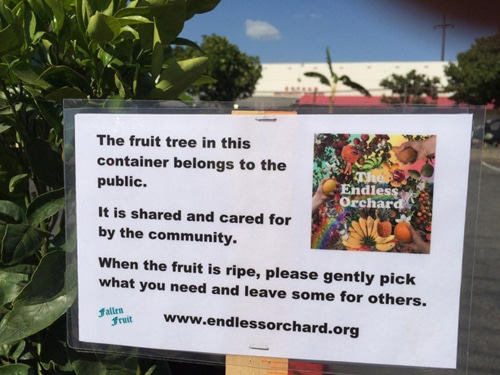
Presented by Dyson and Womack at the HUB – with the City of Los Angeles Department of Cultural Affairs Public Art Division, CURRENT:LA Water Public Art Biennial uses contemporary art as a platform for the exchange of ideas around critical issues our city faces together.
a Rainbow of Fruit Trees!
Water Wise Public Planters: A Rainbow of Fruit Trees! at the HUB by Fallen Fruit 3306 Riverside Dr, Los Angeles installed with the public on Saturday July 16, 2016. The HUB is the central site of Current:LA WATER: Water Public Art Biennial uses contemporary art as a platform for the exchange of ideas around critical issues our city faces together.
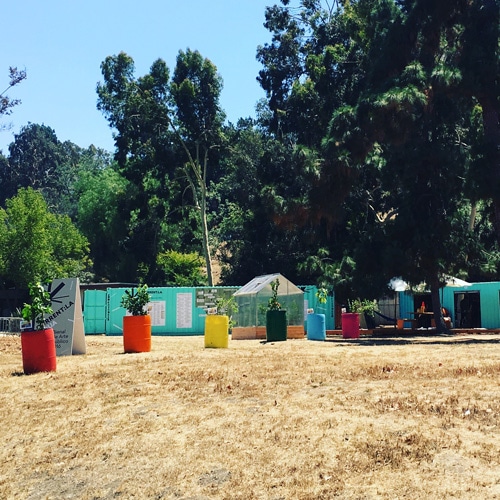
Fallen Fruit’s Barrel Painting and Planting at the HUB with our Water-wise Public Planters.
HUB> CURRENT:LA CALENDAR
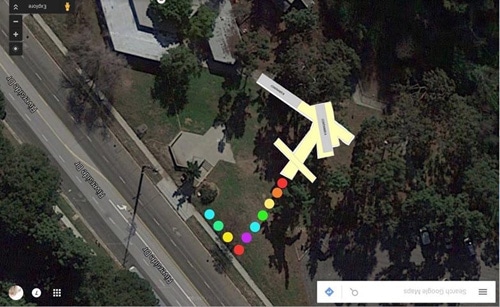
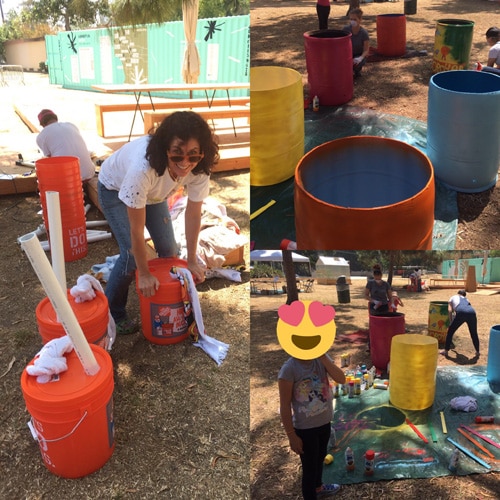 The HUB is hosted by DYSON AND WOMACK
The HUB is hosted by DYSON AND WOMACK
Fallen Fruit’s installation of painted Barrels at the HUB forms a RAINBOW of FRUIT TREES and will be part of The Endless Orchard – an on-going installation in (the margins of) public space, designed to provide communities with an urban experience that can be cared for, cultivated and shared by the public. These ‘Urban Fruit Trails’ have been planted in Los Angeles, New York City, Omaha, Portland and more. The goal is to connect neighborhoods with fruit bearing trees and create walking trails from public transportation to local landmarks. The public fruit trees are along sidewalks, alleys, and parkways where the fruit can be shared with everyone. If you feel inspired by doing this in your own community, but don’t know where to start, check out this helpful article on the – best time to plant fruit trees and see if you can get people together to get started yourself.
Da FUNction!
Join us at Ron Finley‘s Da FUNction! June 10th 7-10pm
xo
Fallen Fruit
The Endless Orchard at William Mead Housing Planting Day!
WILLIAM MEAD RESIDENTS: Plant fruit trees for everyone to share!
Join Fallen Fruit’s ‘The Endless Orchard’ Planting
and Barrel Painting Day for William Mead Homes!
June 5th – 10 am to 2 pm in front of William Mead’s Social Hall
*This Tree adoption is for William Mead Homes residents only
Adopt a community fruit tree and barrel for William Mead Housing:
What if instead of going to the grocery store for an orange or lemon, you just walked outside your door? Imagine a future in which cities and neighborhoods across the world are not only full of fruit trees, but mapped and labeled so that you can walk up to them and pick the fruit yourself. It takes a community to grow an Endless Orchard – and you can help bring this sustainable, collaborative public artwork to fruition!
Being a part The Endless Orchard is easy:
- Sign up to adopt one of 24 fruit trees to share with the William Mead Homes community
- Join us on Saturday, June 5th to plant the trees and paint the 55 gallon planter!
- Agree to help care for the fruit trees and share the fruit with neighbors.
- Together, we’ll make a map and place the fruit trees within William Mead community.
To Participate: email info@fallenfruit.org. Include your name and phone number.
LIMITED NUMBER OF TREES SO SIGN UP TODAY !
The Endless Orchard is an on-going installation of fruit trees on or in the margins of public space and designed to provide communities with an urban experience that can be cared for, cultivated and shared by the public. ‘Urban Fruit Trails’ have already been planted in Los Angeles, Riverside, Omaha and Portland. The goal is to connect neighborhoods and create walking trails from public transportation to local destinations. The fruit trees are planted on the margins of public space, along sidewalks and parkways where the fruit can be shared with everyone. The trailhead will be at the orange grove in Los Angeles State Historic Park and fruit trees will lead out into the surrounding neighborhoods.
The Endless Orchard: phase one- planting day!
|
PHASE 1: We’ve planted tons of fruit trees in the neighborhood surrounding Los Angeles State Historic Park in Downtown LA! In the weeks leading up to this Phase of The Endless Orchard, we went door to door in the community to meet with residents, businesses, schools and churches and we found stewards for the new public fruit trees. These same neighbors came to help us plant the trees in front of their properties along sidewalks and agreed to take care of the trees and share fruit with the everyone. Join us for The Endless Orchard PHASE 2! We’ll be planting more trees, creating our Monument to Sharing, and launching our mobile app where anyone can plant, map and share their fruit! Love, David and Austin |
DONATE: Give a 100% tax deductible Donation to help cover our expenses for The Endless Orchard Phase 2.
Volunteer for our next planting day! Come helps us plant or if you live near The Los Angeles State Historic Park, adopt a free tree, map and care for it.
Becoming part of The Endless Orchard is easy:
1. You have space along sidewalks and fences on private property
– a home, local business or apartment building.
2. The space is sunny and is already being watered or can be watered regularly.
3. You agree to share the fruit tree with neighbors and passersby and be part of
The Endless Orchard where Trees are mapped and shared with the community.
4. Join us March 19th at 10 am at Los Angeles State Historic Park.
We will give you a fruit tree. (Apricots, Apples, Figs, Grapes, Pomegranates and Plums.) We will have volunteers to help plant if needed. It takes a community to grow an Endless Orchard – and you can help bring this sustainable, collaborative public art work to fruition.
email > INFO@FALLENFRUIT.ORG and get involved! It’s free to participate – sign up for a fruit tree at no cost and/or volunteer and help us plant trees on the margins of public space.
The Endless Orchard is an on-going installation of fruit trees on or in the margins of public space and designed to provide communities with an urban experience that can be cared for, cultivated and shared by the public. ‘Urban Fruit Trails’ have already been planted in Los Angeles, Riverside, Omaha and Portland. The goal is to connect neighborhoods and create walking trails from public transportation to local destinations. The fruit trees are planted on the margins of public space, along sidewalks and parkways where the fruit can be shared with everyone. The trailhead will be at the orange grove in Los Angeles State Historic Park and fruit trees will lead out into the surrounding neighborhoods. The Endless Orchard App will launch in June 2016 – anyone, anywhere can participate and share fruit!
The Endless Orchard planting day in Louisville, Kentucky
Hey Louisville! Be a part of Fallen Fruit’s ‘The Endless Orchard’
and help create an URBAN FRUIT TRAIL around historic Portland in Louisville.
WED 3.23.16 9AM
Shippingport Garden, 2500 Montgomery Street
Fallen Fruit teams up with two local nonprofits, Trees Louisville and Louisville Grows, to plant fruit trees on The Endless Orchard in the historic Portland neighborhood at the Portland Orchard Project.
We will plant and map fruit trees for our massive edible artwork, The Endless Orchard in Louisville with Trees Louisville and Louisville Grows as a companion project to our upcoming 21c Museum Hotel art installation in Proof on Main.
We will be planting fruit trees in the Portland neighborhood on March 23, starting at 9am. The public is invited to come and learn more about The Endless Orchard, Trees Louisville, and Louisville Grows.
RSVP to info@fallenfruit.org if you are interested in volunteering.

